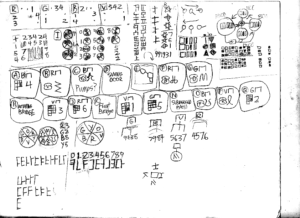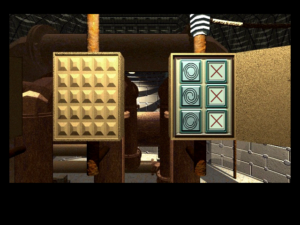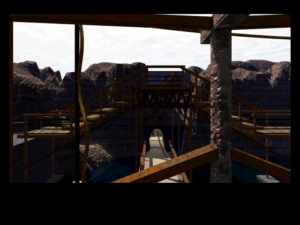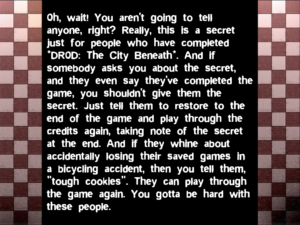Lego Star Wars II
When I first became aware of the original Lego Star Wars game, my first thought was of an enormous lego Death Star that I had seen in a store window. The whole idea of taking that huge sphere of grey bricks and blowing it up, sending a firework-like shower of lego flying through space in all directions, was tremendously appealing to me. So you can imagine my disappointment when I learned that the game only covered the prequel trilogy, and my delight at the sequel covering episodes 4-6. That’s two Death Star explosions, one in 4 and one in 6.
Well, I can report on the first of those explosions now. It wasn’t all it could have been. The game keeps the scale too consistent to make the moon-sized Death Star noticably lego-like from a distance. Still, that’s the only disappointing thing in this game so far. (It’s so similar in style and gameplay to the first Lego Star Wars, it usually meets expectations exactly.)
The Lego Star Wars videogame franchise is, needless to say, peculiar. Game adaptations of things that are adaptations themselves actually aren’t all that unusual, but usually it goes book — movie — game (like the various Lord of the Rings and Harry Potter movie tie-in games) or comic — movie — game (like the mandatory tie-in game for every superhero movie since 1990), not movie — licensed toy line — game. 1 The only other pattern I can remember seeing offhand is book — comic — game without any movie involved at all. This was done by an adventure game based on Druillet’s comic adaptation of Flaubert’s Salammbo. This, incedentally, is one of three games I own that I discovered only after purchase to be based on French comic books. One effect of mediating the adaptation of the movies through lego is that it becomes pointless to take it all too seriously. We’re presented with a world, yea, a galactic civilization populated entirely by lego people. The designers run with that, throwing in lots of slapstick and silly hats — the silly hats have no effect on gameplay; a silly hat is its own reward — and allowing comic dismemberment. We’ve heard about Wookiees pulling people’s arms out of their sockets, but now we get to see it happen. It happens quite neatly: Chewie pulls on an arm, the arm pops off.
For all its flippancy, it’s actually a better-designed game than most of the other official adaptations of the saga. Well, okay: there have been Star Wars-based videogames for nearly 30 years at this point. The Death Star trench run and the Battle of Hoth have been made and remade in so many games, it would be surprising if they weren’t getting pretty good at them by now. Indeed, the designers of Lego Star Wars II seem to want to avoid repeating other games here: the trench run is surprisingly short, and Hoth has various innovations added to spice it up. (Basically, the tow cable has uses other than tripping up AT-AT’s.)
Right now, I’m all the way through A New Hope and The Empire Strikes Back, which is to say, I’ve gotten 2/3 of the way to the end. It took the better part of a day. Like the original Lego Star Wars, this is a pretty short game. Or rather, it’s a game for completists, and their close kin, perfectionists. Reaching the end of Episode VI shouldn’t take long, but getting all the stuff — the golden bricks and the hidden multi-part lego models — will take slightly longer. Reaching the end of the game is in a sense only the beginning, just a way to unlock all the characters you’ll need when you go back to hunt secrets. Some optional areas are accessible by using the dark side of the Force. There are only two characters in the movies who can do that, and I suspect that they’ll be the last ones to become available for play.
| ↑1 | The only other pattern I can remember seeing offhand is book — comic — game without any movie involved at all. This was done by an adventure game based on Druillet’s comic adaptation of Flaubert’s Salammbo. This, incedentally, is one of three games I own that I discovered only after purchase to be based on French comic books. |
|---|
 Comments(3)
Comments(3)




